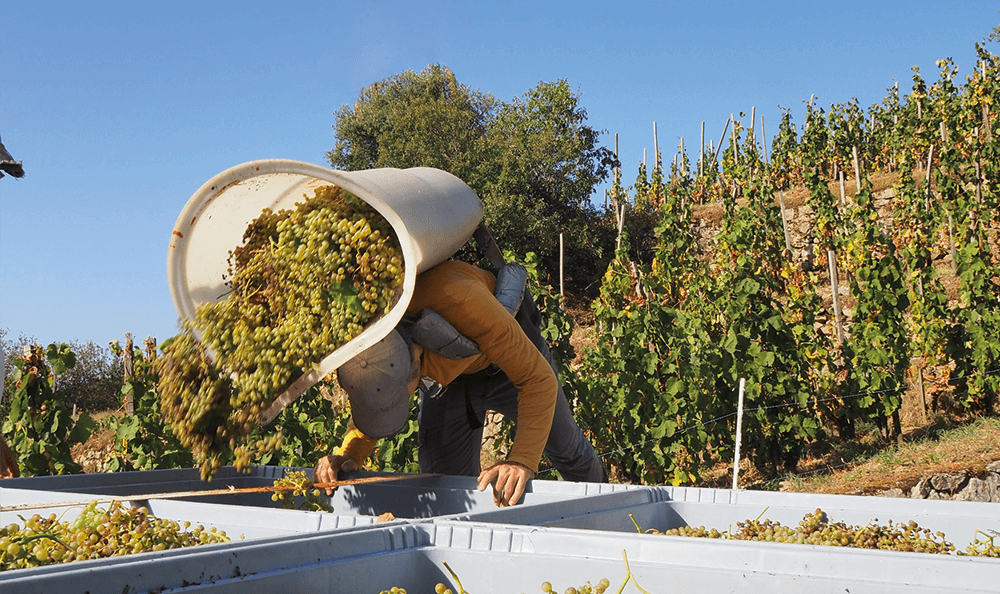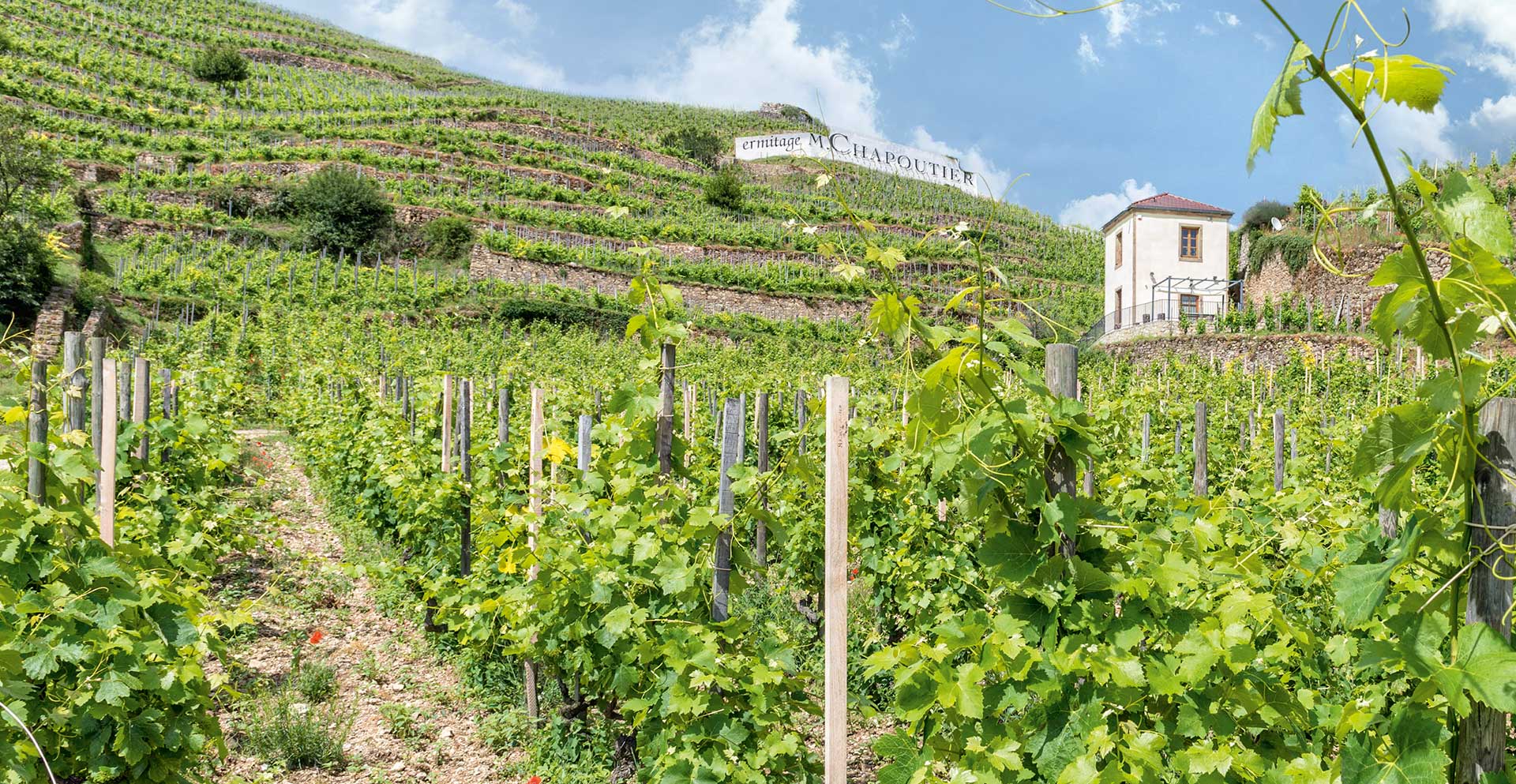Rhone Valley 2023 : a vintage that needed taming
In the vineyard
29 January 2024
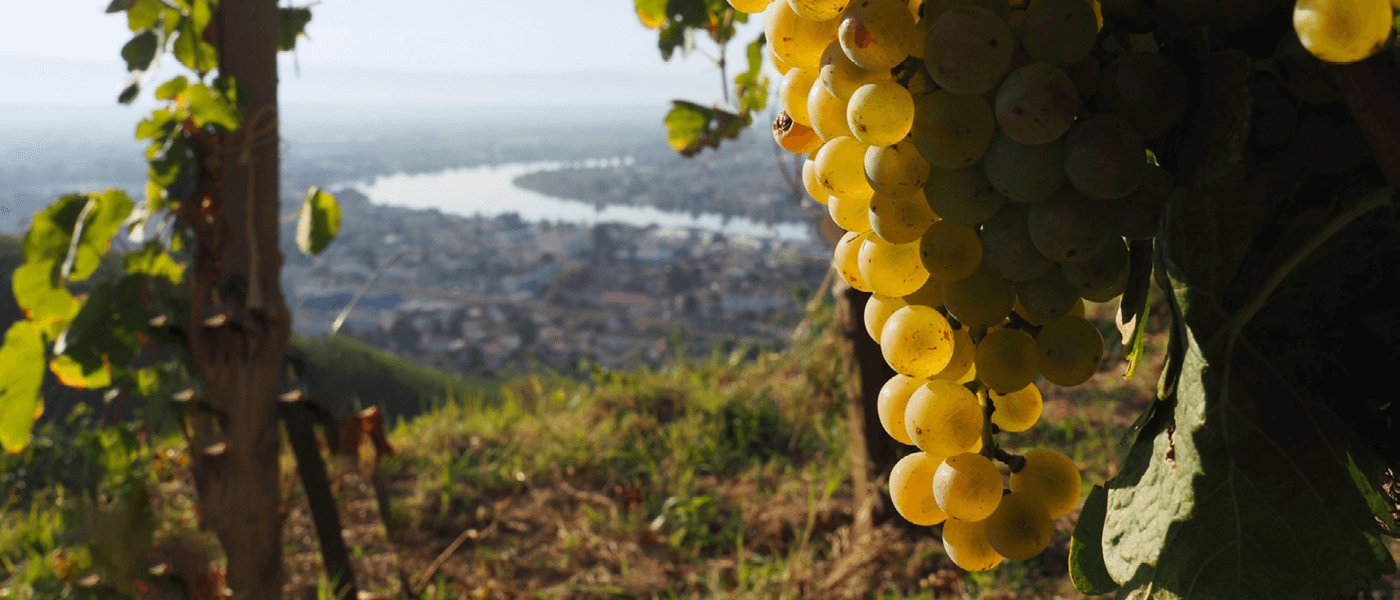
Northern Rhône Valley
2023 was a multi-faceted wine-growing season, producing a vintage formed by exceptional weather conditions. The year saw rainfall shortfalls and excessive heatwaves, accompanied by bouts of Mediterranean rainfall, mildew outbreaks and water stress. But a year too when the Terroirs came up trumps in the face of adversity!
Slow motion
Rainfall in the last quarter of 2022 replenished water reserves, with a cumulative total of almost 450mm by end-December. 2023 startex badly, significantly marked by a water deficit equivalent to 2020 - barely 80mm in the first quarter, and very mild temperatures in the first half of January. Thereafter, a winter chill set in until the beginning of March, with negative temperatures in February on a regular basis.
Pruning of the vines began at the beginning of February in the late-ripening sectors. Pruning wounds were sealed, stiles changed and the land made ready for the year's plantings in Ampuis and Saint-Péray, among others.
In mid-March, the buds began to swell on some plots in Hermitage, before the first sap began to run. Bud-burst began came early in April as temperatures rose, after a very cold but frost-free first week of April. The fairly late and slow bud-burst raised hopes for a "classic" harvest in September. The soils seemed dormant, with no vegetation due to the lack of water. The arrival of spring rains in April and May (a total of 120mm) brought a welcome boost to this slow start to the season. 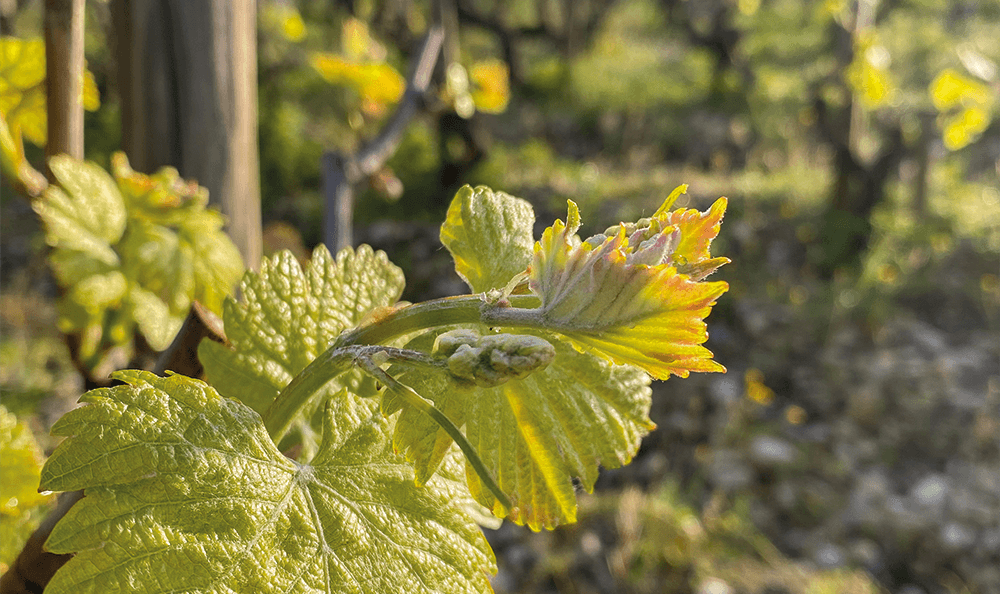
Into overdrive
Thus a second spring came at the beginning of May, with the soil reacting to the rainfall: the spring flora exploded, poppies coloured the contours of the Hill and the first spreading leaves on the vines transformed the landscape.
By the end of May, flowering had already begun, and it happened quickly and simultaneously in the different sectors. At this time, the first spots of mildew appeared. The hillsides went into overdrive as vine growth accelerated. The workers put their shoulders to the wheel, dedicating a lot of time to green harvesting and pest control. The small but regular rains of May and June meant no respite. The Syrah grapes were bursting at the seams and fruit set was rapid. The harvest was looking big.
At the beginning of June, cryptogamic pressure increased in Ampuis and mildew affected the quantity potential in some plots. Planting got off to a good start thanks to regular and natural watering from the spring rains. The hillsides turned green and the shoots climbed the trellises. Topping and trimming continued, with spring fungal pressure lasting until the summer heat came in July.
Hazards
With regular rainfall and a relatively cool month of May, concerns about a water shortage temporarily receded. June was warm overall, with some high temperatures for the season. While work on the soil was stopped to limit evapotranspiration, some de-compacting was required on the more recent plots to avoid water stress in the dry areas at the start of the summer.
At the beginning of July, temperatures rose steadily to around 30°C. With persistent morning humidity, downy mildew was slow to dry out in Ampuis despite our best efforts. The hillsides, with the natural ventilation of their exposure, were spared, as were the Viogniers in Condrieu.
However, a good start was made to veraison in mid-July, with no particular stress apparent; vegetation was even more luxuriant than at the same time in 2022, and mildew finally died out in the northern Rhône Valley. Although July was dry overall, the rare rain showers were very stormy, sometimes accompanied by hail, which damaged grapes in Cornas. Damage to stems took a long time to heal. But fortunately, Saint Pierre was watching over us! The grape colour change was in full swing, and we were preparing for a harvest at the end of August and beginning of September. But at the end of July, a deluge of hail hit certain areas of Crozes-Hermitage, damaging foliage. However, with the help of valerian and plant infusions, new leaves sprouted and allowed the grapes to continue ripening. 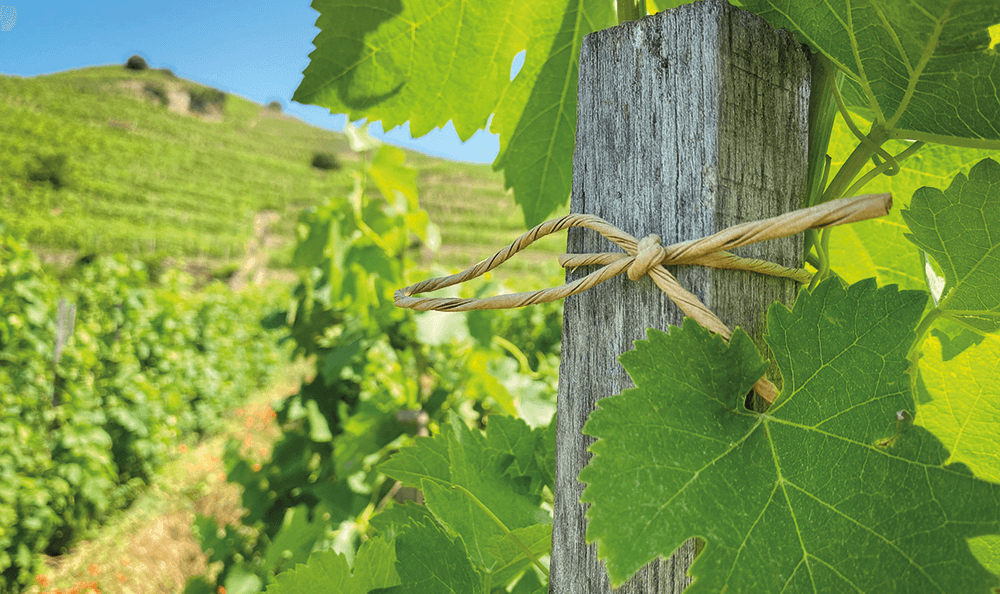
A turnaround
Until the beginning of August, temperatures remained relatively mild. From 8 August onwards, everything changed in the space of ten days or so, and suddenly we were contemplating an early harvest. Warm southerly winds brought a rise in temperatures, and a late heatwave set in, turning out to be the longest of the year. The week of 21 August saw hitherto unknown temperatures after 15 August in the Rhône Valley, with record highs on 24 August.
We finally got off to an early - but scorching hot - start for the harvest, picking the first slopes of white grapes with the aim of preserving freshness and balance and limiting wilting. Our pickers set off down the Méal hillside at dawn to begin this 2023 vintage... on 23 August!
The first week saw very early morning picking, in short bursts to avoid the effects of the heat. Yet another example of the gymnastics required to get to grips with this year's vintage. Harvesting of the slopes of Les Murets (De l'Orée) and the Lieu-dit Saint-Joseph (Les Granits) followed. As a result of the hot weather, some of the more recent plots suffered burnt and scorched foliage.
But a second vintage was in the offering the following week, when the weather pattern changed to that of late September, following revitalising rainfall of almost 100mm in three days. Although the hillsides had drained the run-off water, we had to resume clearing the plains following the rapid growth of weeds after the rain, in order to maintain a dry climate and boost phenolic ripeness. 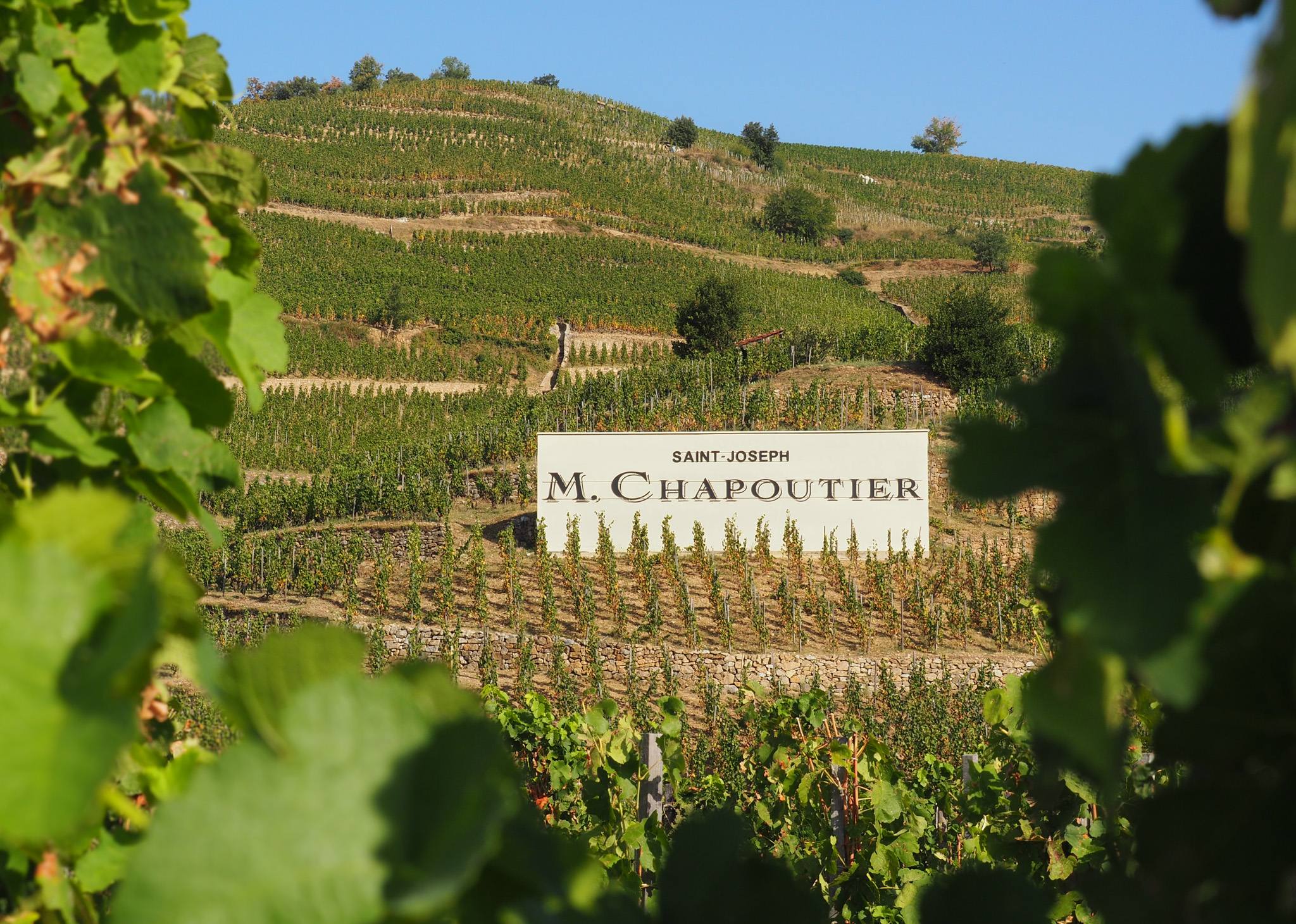
We continued picking the Marsannes in Crozes-Hermitage and Saint-Péray, showing restraint to allow the grapes to ripen further, and Chéry (Condrieu) and Côte-Rôtie on 11 and 12 september. On the eve of an exceptional Mediterranean episode, we harvested the better part of the Pavillon, which had developed well thanks to its protective exposure.
To round off the season, the late-ripening reds in Hermitage, Saint-Joseph and Cornas took full advantage of the cool nights and almost summer-like end-of-season temperatures to achieve superb ripeness while retaining beautiful freshness.
The harvest ended at the beginning of October, without doubt the longest for several years, with different signatures of the vintage all in one!
While the granite Terroirs of Les Bessards have once again come out on top, unperturbed by the vagaries of the weather, the big surprises also come from Ampuis, where the Côte-Rôtie wines show great potential. The trend is for fairly low total acidity but good pH levels (Syrah: 3.6 - 3.8) and good freshness on the palate. The wines are colourful and have northern profiles with fresh structures. The early-harvested Marsannes demonstrate surprising minerality in the early results of this "heatwave vintage".
Southern Rhône Vintage
As early as the first quarter, the lack of water slowed the start of spring (barely 36mm of rain over the three-month period) and bud-burst, which did not begin until early April. The winter drought in the Southern Rhône Valley was forgotten for a while with some welcome spring rainfall, and enthusiasm returned in May (175mm over May and June in total) with the revival and momentum of the plants, which were finally moving up a gear. The landscape was transformed, with life returning to the plots and poppied turning the soil red.
By the end of May, the inflorescences were already clearly visible, heralding a generous harvest. Flowering went perfectly well, and there was virtually no dripping on the Grenache... Everything was off to a good start for this year's crop. Daytime temperatures were already very high, with peaks in excess of 30°C, but the nights were often very cool for the period (sometimes below 10°C). A hailstorm brought us back down to earth, reminding us that nothing can be taken for granted... "Fac et Spera" - Do & hope for the best.
At the beginning of June, when the grapes are the size of garden peas, the vegetation continued to grow and the Grenache vines were only lightly topped to encourage the "umbrella effect" to protect the bunches from the sun and therefore from scalding. The potential in terms of quantity was now evident, and with the Mediterranean landscape marked by water stresses, we chose to loosen some plots in order to ensure good grape ripening and avoid any blockage later on; we know that this grape variety can be capricious when it comes to phenolic ripening when water has been in short supply.
Although the Mistral wind blows timidly during this period, plant pest pressure was very much under control this year, given the absence of excessive rainfall. As veraison approached, the old Grenache stumps stood up like trees, and the cicadas were in full swing in the summer heat. Plant growth had come to a halt, but for the moment the apexes held firm, a sign that the vines are not suffering... yet. Temperatures remained moderate for the period, which suggested an easy ride ahead. At the end of August, after 5 days of scorching temperatures above 40°C, signs of defoliation were beginning to appear on Terroirs with limited water reserves. On Croix de Bois, on the other hand, the deep clay spared the vines such suffering, but the wind started to pick up, stripping the thirsty stems of their protection.
The Clairettes were the first to be harvested, the day after the exceptionally hot days that hastened ripening. The Syrahs, whose development had accelerated, were harvested at the end of August. And at the beginning of September, the first Grenache grapes went into the cellars. Although the vintage got off to an early start, the grapes were still really ripe.
We harvested Croix de Bois on 11 September. Barbe Rac was picked close to the autumnal equinox, a clear indication that the Terroirs have taken over this vintage and that Grenache is more than suited to this sunny climate. This fine season in the south, with its dry start, cool spring and moderate heat until August, combined with good vineyard management, enabled the Grenache grapes to reach excellent ripeness. Early tasting of the grapes revealed aromas of fresh fruit with hints of strawberry and black cherry, heralding a great vintage for this variety.